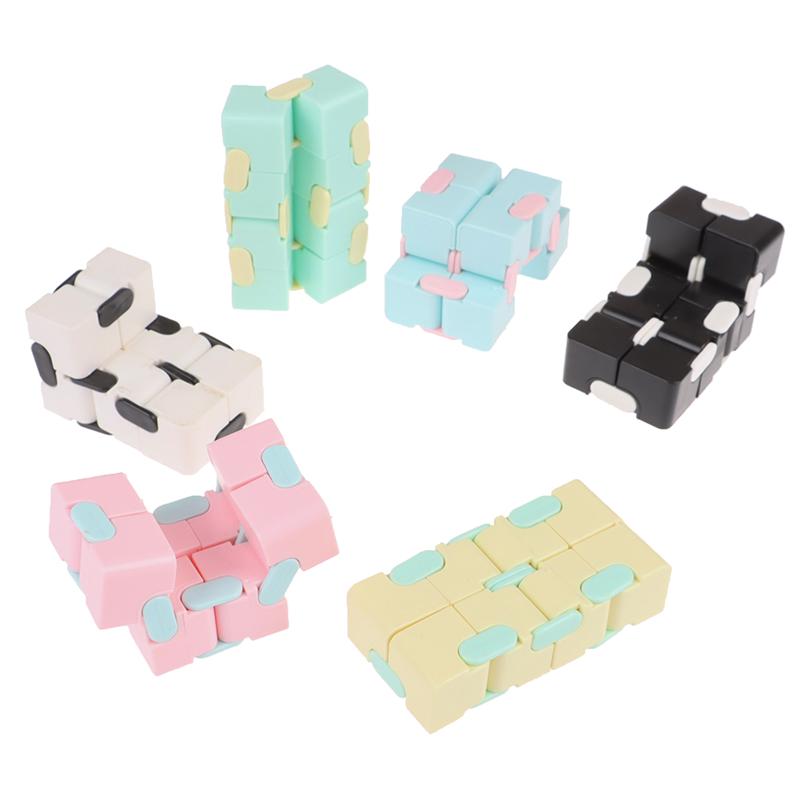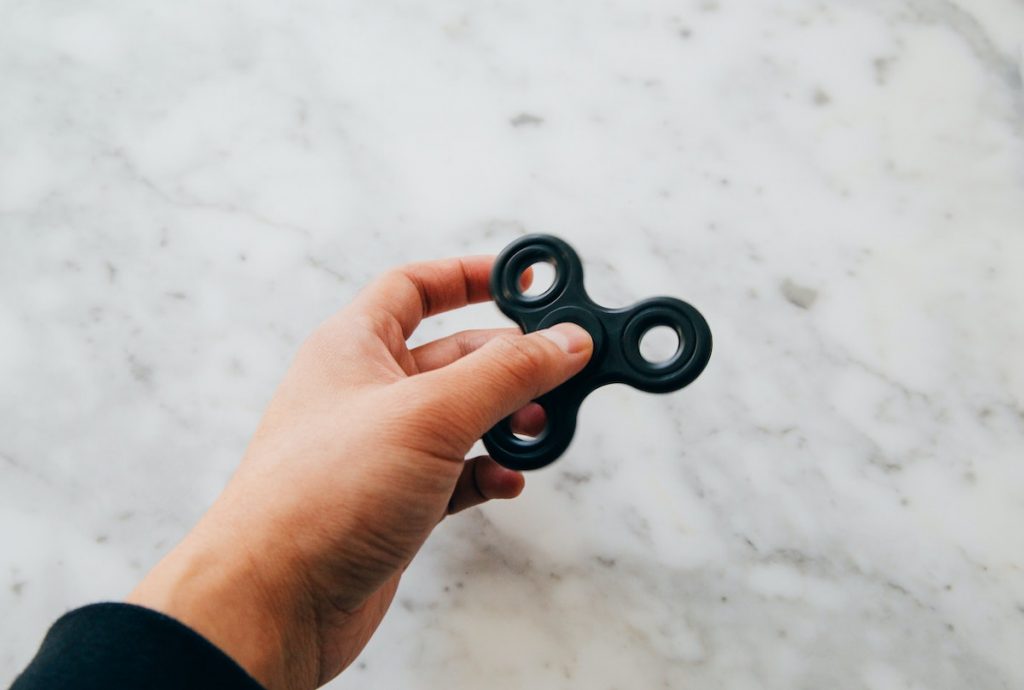We’ve all seen fidget toys, those tiny things that kids hold between two fingertips and spin around, or little cubes that have various buttons and switches that do nothing.
Pretty harmless fun and distraction, and when they first came out back in 2017, it was one of the biggest cultural trends of that year. In fact, in 2017, every toy in the top 10 best-selling toys on Amazon was a fidget toy of some kind. Now that 3D printers like the Cricut maker are becoming more and more prevalent in the home, a lot of kids and parents are starting to print and build their own fidget toys.
But their popularity wasn’t ubiquitous: teachers and schools were very quick to ban them from classrooms, and various child psychiatrists and pediatric learning experts argued constantly on the fidget toys effects on kids and adults with anxiety or ADHD.
And while studies haven’t been conclusive, more and more scientists are seeing the benefits of having fidget toys for children and adults who struggle with maintaining attention, with its positive effects on adults being more noticeable. Some scientists go so far as to say that, used properly, playing fidget toys can be an excellent habit for improving a person’s everyday life.
Can kids benefit from fidget toys, or are they just detrimental distractions? Let’s take a look at some facts.
What Are Fidget Toys?
Fidget toys like spinners and cubes didn’t come out until the latter half of the previous decade, but the concept of having something to fidget with isn’t a particularly new idea. Go back to any point in time when you’ve repeatedly clicked a ballpoint pen or spun a coin on a table, or any kind of repetitive motion with a small item in your hand while you were either trying to concentrate or when you were trying to distract yourself.
Some types of fidget toys are:
- Calming fidget toys
- Tactile stimulation fidgets
- Alerting, Attention, and Focusing fidgets
- Resistive and heavier input tactile fidgets
- Chewing fidget toys for attention and release of energy
Worry beads and prayer beads have been around for centuries, with people from all over the world having this type of object in one form or another. Prayer beads like the ones used in Christianity, Buddhism, Hinduism, and various other religions are designed to maintain the person’s attention during religious rituals.
Meanwhile, worry beads like the Greek kompoloi have absolutely no religious significance (although their origins might be religious in nature).
Do Fidget Toys Help Anxiety?

Some say fidget toys help with their anxiety based on various blind studies. A vast majority of people have reported that fidgeting is a way for them to stay focused and zen while performing a task that requires a lot of their time and attention.
People who are self-confessed fidgeters often report that fidgeting allows them to remain calm during mundane tasks, keeping them relaxed and contemplative during long hours, with some even reporting that fidgeting keeps them in a mindful and alert state.
However, the scientific jury is still out on the exact cause of fidgety behavior. Studies on sensory perception have shown that people will almost always adjust their experiences and their environments so that their brains can absorb just the right amount of stimulation. This is why scientists can’t make a blanket statement on the positive effects of fidget toys: different people will function differently when confronted with different levels of fidgeting.
Think of it this way: in offices, some people work best when using noise-canceling headphones to avoid distractions, while some people thrive in the social aspect of the office.
This is true with children as well: some kids respond positively to sitting quiet, staying still, and listening intently to their teacher, while some kids require some form of tactile activity for lessons to completely stick.
While the optimal level (or lack, in some cases) of stimulation varies from person to person and changes depending on their activity, fidget toys have been found to create the ‘right’ amount of stimulation for people who require tactile movement without completely distracting them from the task at hand. This has been found to be true both for adults and kids.
Do Fidget Toys Help with ADHD?
Studies have shown that children with ADHD actually benefit the most from the use of fidget toys.
During a lab-based concentration called the “flanker paradigm”, scientists found that kids with attention disorders required above-average levels of overall movement when performing tasks that demanded much from their cognitive centers.
This begs the question: should kids be playing with fidget toys?
Are Fidget Toys Good for Kids?

They’re both good and bad for kids, and that would depend on the type of fidget you give them.
At its height back in 2017 and persisting up to now, fidget toys have been met with pretty stiff resistance from educators, with schools across the country outright banning fidget toys on campus. Despite all of the benefits we’ve just mentioned, however, not all fidget toys can be beneficial for children.
From a therapeutic perspective, the best type of fidget toy is one that can be held and manipulated without any need for visual stimulation. However, many fidget toys, especially ones that have flashy designs and are built for tricks, often require a large amount of hand-eye coordination, which would ultimately be distracting in a school setting.
That being said, certain fidget toys that don’t require the user to look at them while they’re being used are the ones suggested by child psychologists and therapists thanks to their one-dimensional use. The fact that they’re classroom-friendly (i.e. not distracting to anyone else) is a big bonus, too.
Fidget toys can serve kids and adults positively, provided they’re the type that is only distracting to the user themselves and provides them with just the right amount of stimulation to help them focus on their task at hand.
Our advice: if it can be played with beyond spinning, it’s not a therapeutic item, it’s a toy. And you would best choose a fidget type that would fit you or your child’s need for focus or stimulation.

